You never know what you’re going to find when you repot a tree for the first time, or when you finally get around to addressing a tree’s major flaws. The Japanese beech below was due for a reboot. The tree’s owner began by working on the roots.
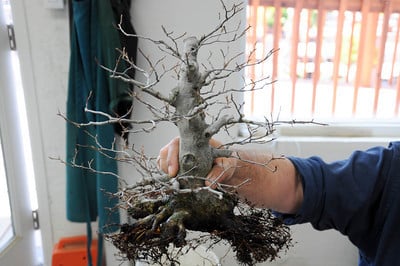
Japanese beech
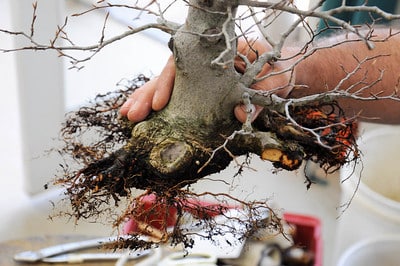
Poor nebari
In addition to removing rotten, dead roots, the tree’s owner worked to flatten the base of the rootball. By carving away unnecessary wood under the trunk, we can encourage the lateral roots that help flare the base of the trunk and create taper. After grinding away for a while – a blister-inducing activity – signs of an old air layer appeared. Although it’s common to use a tight band of aluminum wire when air layering beech, its best to remove the wire before it becomes embedded.
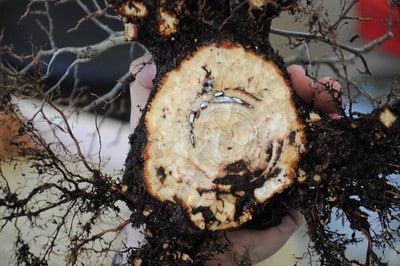
Evidence of an old layer – flashes of aluminum wire
With the rootwork complete, the tree’s owner planted the beech in a large box to encourage rapid root growth. In a few years, we can expect a lot of improvement in the roots.
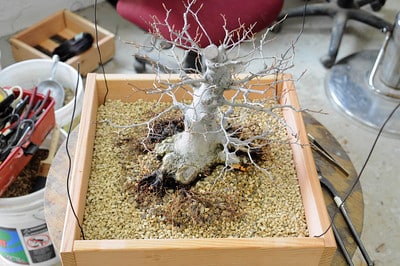
In the new pot
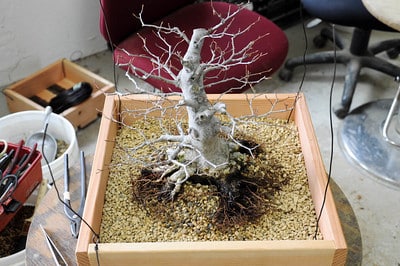
Not sure if this is the front or the back – time will tell
Subscribe to Bonsai Tonight
New Posts Delivered Every Tuesday and Friday
Kathy Sloan says
What soil are you using? Thanks, Kathy
Justin Rotert says
Hey same question as Kathy, and sorry to ask this random question but, What is the best thing to do with a recently collected Urban yamadori? Like I just brought it home now what? I know some wash all the dirt off(with deciduous ) some leave it in a bucket with water for a day and plant it in a box and let it rest….?
THANKS
Justin
xwires says
@Justin and Kathy – You can read more about the soil here: http://bonsaitonight.com/2010/10/01/bonsai-soil/.
@Justin – As for urban yamadori, I don’t recommending bare rooting the tree this time of year – you can work on the roots during repotting season. The main thing is keeping the tree healthy. The fun part can begin when the tree is growing vigorously in its new home.
@JayCee – I haven’t air layered fir trees before. Maybe some other readers will offer advice for the species.